SPECIAL FLIES OF YELLOWSTONE COUNTRY (part 7)
| Sysadmin Note |
|---|
| Part 6 can be found here |
Case #4: Green Drake Feeding Frenzy
Part 2 - NE YNP waters
First of all there are many good days when anglers encounter apparent Green Drake hatches and trout rising for them accordingly. Streams in northeast side of Yellowstone National Park such as Lamar River, Soda Butte Creek, and Slough Creek are famous for these hatches. So if you hit one of good days filled with hatches and rises you are in fisherman's paradise. But then again, it's interesting to note how trout behave before the hatch and even when the hatch is sparse to none. It's the same scenarios as discussed in the previous chapter about the Gallatin River but I never believe it's redundant. Indeed, it's important to know if one wants to fish this breathtaking setting at least once and catch native Yellowstone Cutthroat. Before the Green Drake hatches and when the hatch is sparse to none trout in this area seem to make a Green Drake out of our well-presented dry-flies and take them with confidence. Is it because of taste, texture, silhouette, or something else? We could only guess since those factors are programmed in a trout's brains from previous feeding experience along with the time of year. Then those experiences must have been wonderful for cutthroat.
Season:
September is the prime month for Green Drake hatches at the aforementioned streams. However I tie on Green Drake patterns for my clients from late August (even in early August). It turned out to be great for everyone (maybe not be for trout).
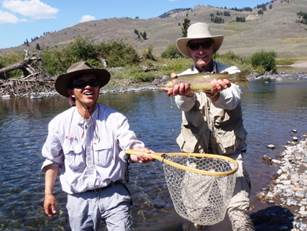 |
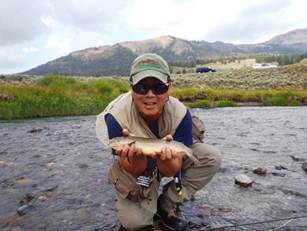 |
Lower Slough Cutbow |
Native Cutty from Soda Butte |
Flies:
This is another set of flies developed by YNP guides and proven by native cutthroat.
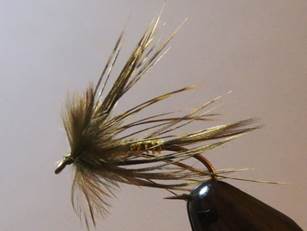 |
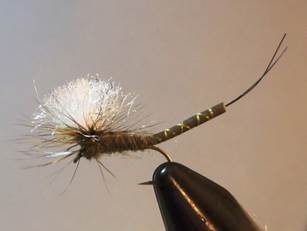 |
Master Angler's Green Drake Flymph
|
Yamamoto's UFL Green Drake Parachute
|
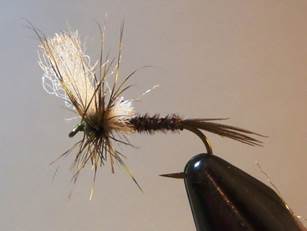 |
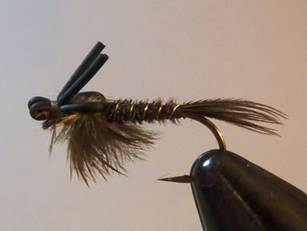 |
Yamamoto's Pheasant Tail Mayfly Cripple – Green Drake
|
Yamamoto's Winged Victory – Green Drake
|
Sight-Fish Tactics:
Sight-fishing during the Green Drake period is quite challenging as well as quite rewarding. Not many anglers try this because:
1. They don't know how to do it; instead they stick at one spot with one method
2. Sight-fishing can be really technical.
First, one has to spot cruising trout and get as close as one can. This is the hardest part. During the late season water levels get low and trout become wary after all the summer fishing traffic. Second, one has to make a quick and accurate cast. It's not a long demanding cast. Rather a short cast, even Bow-&-Arrow casting or Dapping, is all one needs. But this is hard to perform if one is not used to this type of fishing. Third, and the most critically, setting the hook on gently rising Yellowstone Cutthroat (or rainbow and cutbow hybrid at Lower Slough) is very technical. Often we end up pulling our flies out of their mouths because we get so excited seeing cutthroat rising with their large mouths open that we set the hook before they close their mouths. This commonly occurs whenever we are fishing for Yellowstone Cutthroat. But if one hits a right day with the right flies, one can be happy like this.
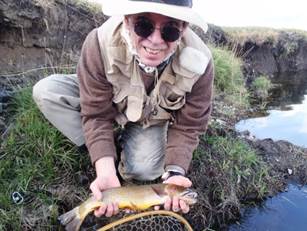 |
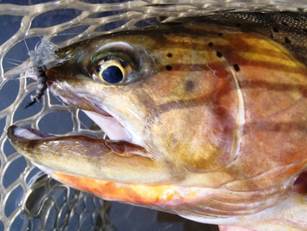 |
Some of the nicest Cutty in the area! |
Up close & personal |
So, don't be discouraged when you don't see actual hatches and rising trout or when your favorite spots are taken.
Satoshi Yamamoto, https://leftyangler.blogspot.com, is a guide and a professional fly-tyer in Livingston, MT.
| Sysadmin Note |
|---|
| Part 8 can be found here |
